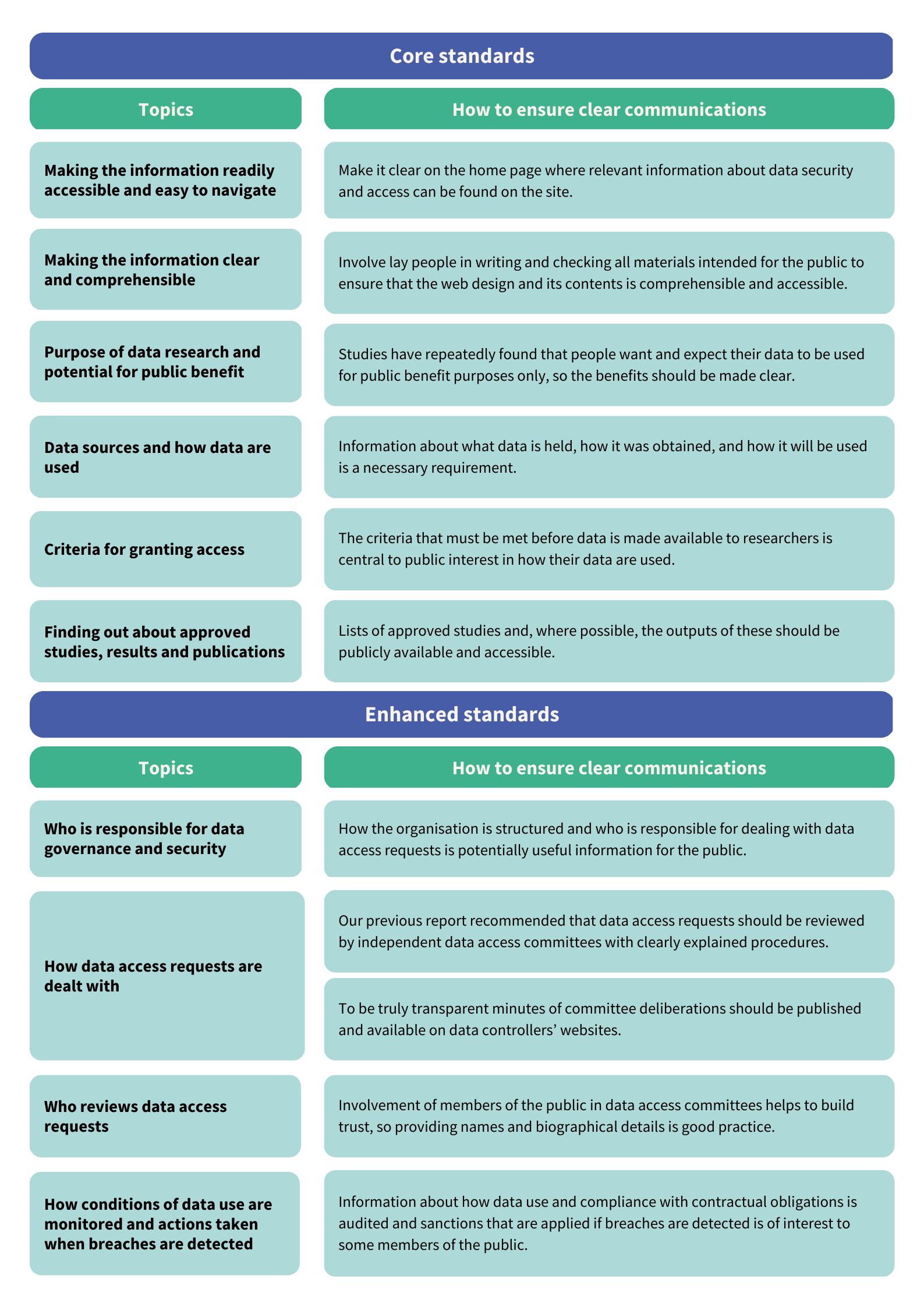How well is information on data access processes shared with the public? Introducing standards to inform good practice
10 March 2023
Alan Holcroft is a member of the Public Advisory Board, interested in how organisations build the public’s trust and confidence in providing access and consent for their data to be used in research. In this blog, he introduces a set of standards aimed at promoting clear communication of data access processes with members of the public.

HDR UK’s Public Advisory Board (PAB) brings together members of the public with diverse backgrounds and health experiences, who are interested in health data and its ethical and trustworthy use in research, to help deliver real benefits to patients and the public. The PAB provides strategic advice on many elements of HDR UK’s work and helps to ensure the development and maintenance of public trust in data access and use.
I joined the PAB in January 2022 and am particularly interested in how organisations develop the public’s trust and confidence in providing access and consent for their data to be used in research. Whilst I’m aware of some of the concerns that people may have, there are also positive impacts that providing access could have in research, which ultimately can improve everyone’s lives.
Data access and communication
The question of who accesses health data is an emotive topic of discussion and has implications for the public’s trust in how data is used. Approval processes should be transparent, and the views and perspectives of those whose data is being used must be heard and considered in decision-making. This will ensure that patients and the public can rely in the use of data from their health records only for the public good.
One element that is crucially important in building and demonstrating public trust is clear communication about how sensitive data is made available to researchers. In 2021, the PAB produced a report with recommendations on public involvement in data accesses processes following a survey of 45 members of the UK Health Data Research Alliance (‘Alliance’).
The survey revealed many missed opportunities to inform and involve the public about policies in relation to health data use, and a lack of consistency in how data access requests are assessed and publicised. On the plus side, the PAB did find a few excellent examples of public involvement and transparency.
As a follow up to the 2021 report, in 2022 the PAB decided to investigate how well data access processes and public involvement in those processes, were being communicated to a wider public.
What did we do and what did we find?
We undertook a search of over 70 Alliance member organisations’ public websites to assess their accessibility, and whether they used clear, non-technical language throughout..
This revealed a few good examples, but it became clear that many websites had not been designed with a public audience in mind. Some of the most common issues we found were:
- The information provided was aimed at researchers, based on the use of academic language and lack of clarity on the involvement of patients and the public in data access processes, if any.
- Often, the information provided was incomplete and fragmented, being included in various sections of the same web page or different web pages.
- Many websites were not user-friendly, difficult to navigate or outdated.
How can this be improved?
From our analysis, we compiled and presented recommendations for members of the Alliance. We believe that some of these recommendations – the ‘core standards’ – should be included in all websites, and others – the ‘enhanced standards’ – are desirable to further increase transparency and public trust in data access processes.

Download pdf version of the recommendations table
Reflections
Undertaking the website search and discussing the findings has been another learning opportunity for me and other members of PAB. We have taken a pragmatic approach to address the issues identified by setting core and enhanced standards that can inform good practice. Recognising that organisations not only need to continually update their websites but are also at different stages of their public involvement journey, small steps to meet core standards can, and hopefully will, lead to better communication of data access processes in the nearer future.
I really feel that we will see an uplift in public trust in the use of health data for research as members of the Alliance work towards implementing these recommendations. How to measure progress since the publication of these standards is yet to be determined, but this will be another interesting question for PAB members to consider.



